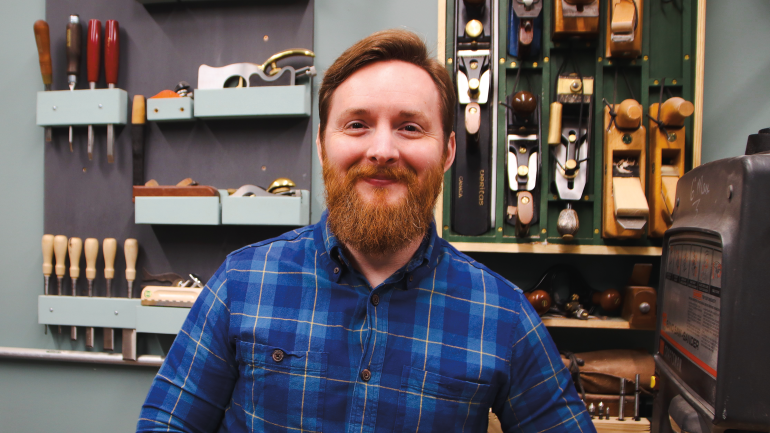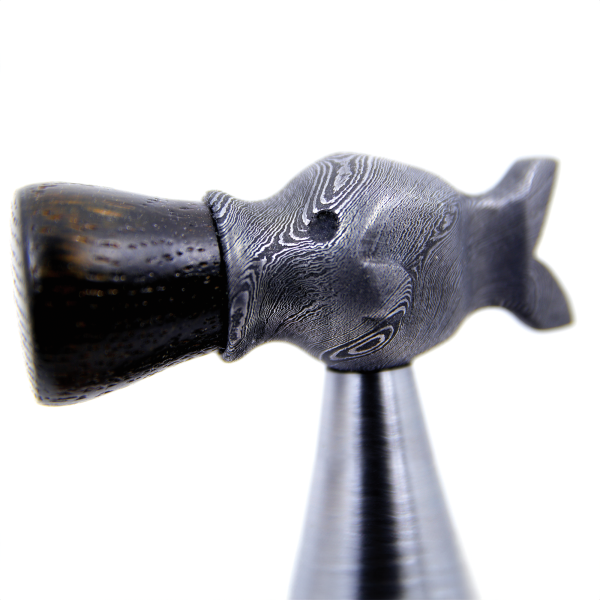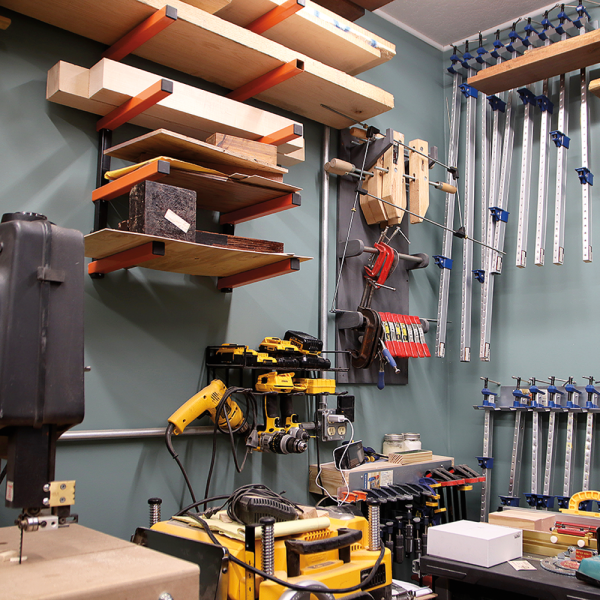The Simple Pleasures of Problem Solving
The Simple Pleasures of Problem Solving
To take a virtual tour of the author’s studio, check out his YouTube page.
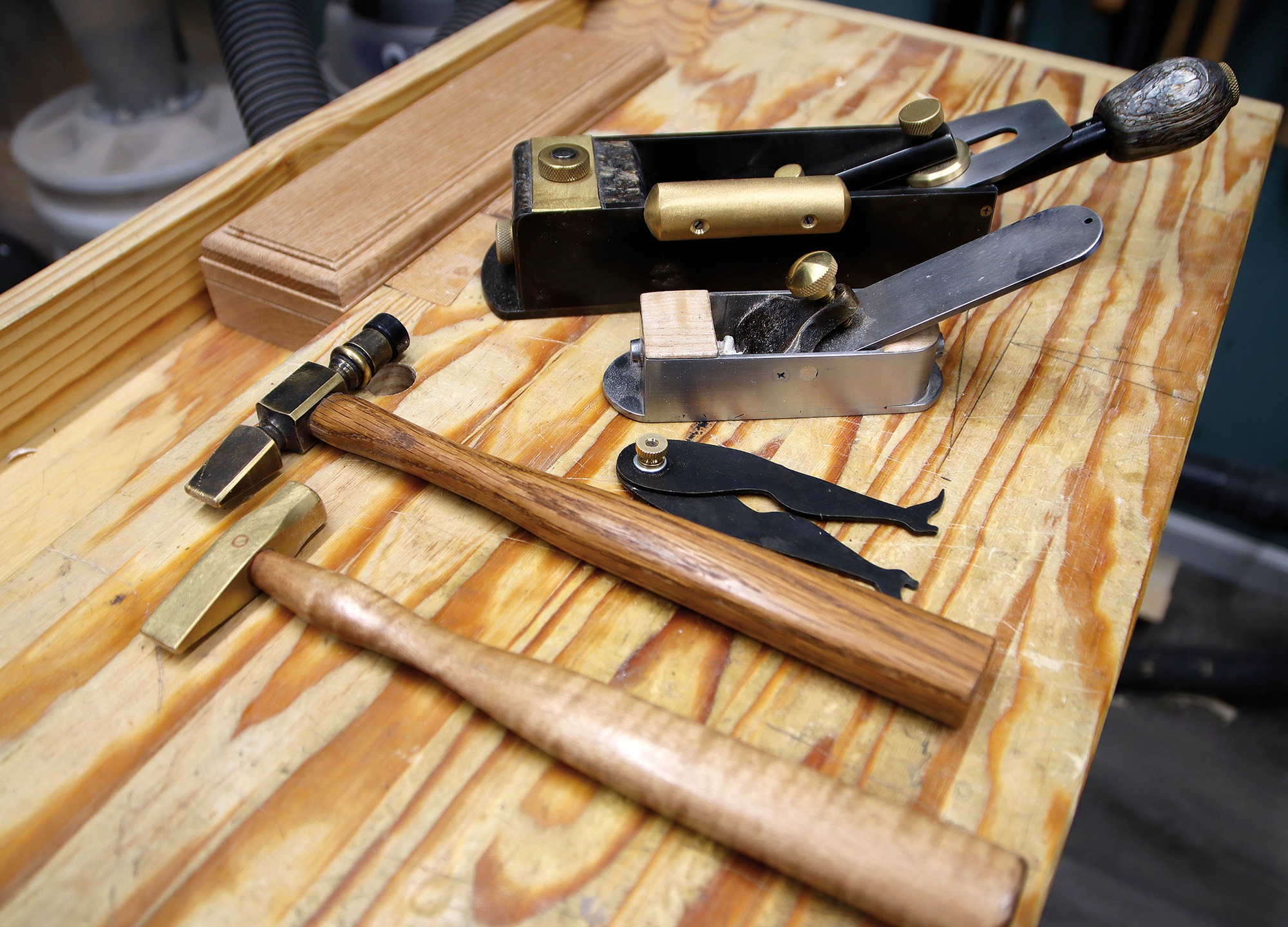
When I’m working on projects in my home studio in Chatham, Illinois, it’s about the experience, not the object. “Focus on the making” is the philosophy that drives me. I find this approach enables exploration, experimentation, and the freedom to start over (again and again, if need be). If the thing I set out to make is less than perfect, it’s okay. Starting over doesn’t sting too much. It’s an opportunity, in fact, to both reexperience the parts of the building process I enjoy and discover something new along the way.
I’m a maker of furniture (for myself), décor (for charity auctions), and hand tools, which I make primarily for woodworkers. My studio, where everything is done, from design to production, is relatively tiny: 140 square feet to house a workbench, tools, and materials, including a stash of wood, steel, and brass; space to create and move around; and a camera to document what I’m making (I routinely upload my visual journal entries to YouTube).
I’m guessing if anyone else had to navigate my shop, they’d find the setup inefficient, at least from a production standpoint. My tools are stored in front of other tools, and materials are buried in corners and under machines. I also have a habit of bouncing from station to station, leaving bits and pieces strewn in my wake, which allows me the flexibility to make things in whatever way I’m feeling in the moment.
Even in a small space, though, it’s incredibly easy to lose stuff, so I make sure everything does have a place to live. That said, any device with a permanent home in the studio needs to facilitate a particular experience. Sometimes that involves learning a new skill or trying a new technique; sometimes it is re-creating a specific way of working. And while I do have some larger power tools (including a band saw, the most hand tool–like of all the power tools), the bulk of what I produce day-to-day is generally done with a few hand files, chisels, and hand planes. Nothing is particularly exotic or rare, which is part of the pleasure. I find you can use common tools to make almost anything.
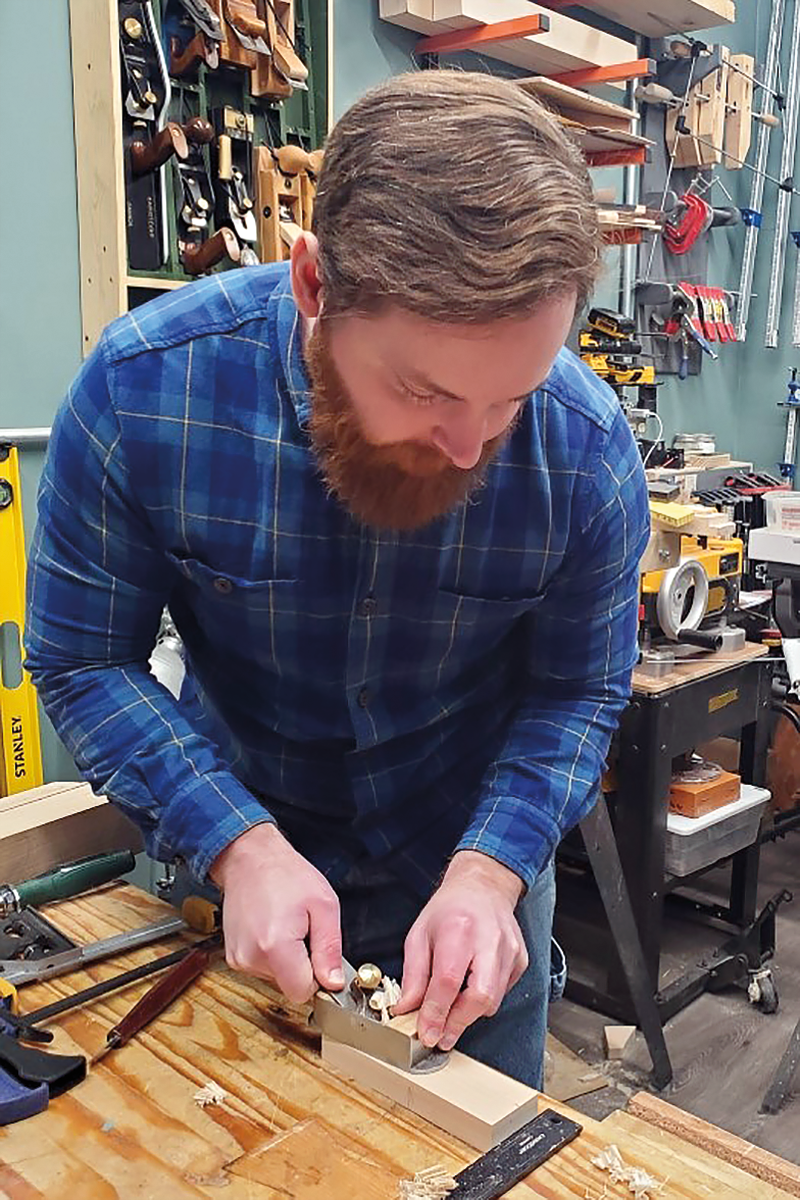
My first toolmaking project involved making a small hammer from brass and maple. The process proved so fun, I made a few more, with the simple goal of improving upon the last. Then a few people asked me to make them one. Then a few more, and so on. With each iteration, I pushed myself to try something new—to do better. From hammers, I branched out into other tools, including calipers and various styles of hand planes.
There is a lot of flexibility when working by hand. One tool allows for multiple operations, where often the only change needed when moving from one operation to the next is altering how the body is positioned in relation to the work. Something as simple as a chisel can turn wood into any shape you may want. Often all that’s needed to bend brass and steel to your needs is a file. As a result, I find it particularly satisfying to figure out how an object would have been made pre-mechanization.
The benefit to machinery, of course, is speed and repeatability. But the downside is expense and the space requirements, especially when one device is required to do operation A, another is needed for operation B, and so on. That’s why, even when I come up short, I find immense satisfaction in trying to outcompete a machine. It teaches self-sufficiency and inevitably forces me to develop new skill sets.
I approach each tool as a manifestation of artistic expression, similar to sculpture. But instead of using clay or stone as the medium for creating, I use metal and wood. The way the object feels in the hands and how it performs is all part of the experience; it should be pleasant to touch and be able to do the work that it was created to do. Even the packaging of the tools that I send to other woodworkers is part of my overall approach and aesthetic, as that will be their first impression of what I’ve made.
Ultimately, I just find great enjoyment in making, and I try to imbue that into the objects I design, so others can share that enjoyment. This all circles back to my studio. If it wasn’t a pleasurable place to be, I would not be doing what I’m doing. My hope is that what I make in my space inspires someone else to make something of their own.
Take a Virtual Tour of Eric Meyer's Studio!
Eric Meyer created a virtual tour of his studio for American Craft. Check it out below or on his YouTube page.
